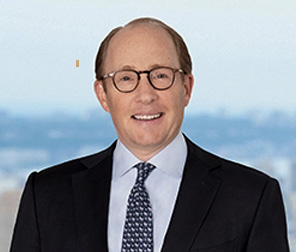KEY TAKEAWAYS
- Higher interest rates are creating both opportunities and risks within private and public credit markets.
- The value of independent research and the negotiation of lending deals might be underestimated in the current market climate.
- Active managers who evaluate relative value across public and private markets could have an edge in discerning which companies will face refinancing obstacles versus those that won’t.
JH: With US interest rates reaching their highest levels in decades roughly two years after the zero-interest rate policy concluded, we’re witnessing a significant impact on both public and private credit markets. As investment opportunities now offer rates of around 10%-11% in parts of the less liquid public markets and as much as 12%-14% in upper-middle markets, the higher income and lower prices help offset some of the downside risks as growth slows. Chris, considering your expertise in special situations and work-outs, what effects are you observing due to these heightened rates on corporations?
CJ: In looking for opportunities to make investments, we’ve been observing the impact of higher interest rates for some time now. We’d expected to find companies facing challenges servicing increasing cash interest expense, in some cases exacerbated by short-term operational challenges or some unforeseen other needs for cash. This can lead a company to look to the market to address any near-term debt maturities. And in some cases, overly optimistic financial projections led companies to take on a bit too much debt. Within the cohort of leveraged buyout transactions financed in early 2021, we do see such opportunities in technology and health care sectors, among others. In many cases, the capital markets solution for these names could come from the private credit market. At present, these opportunities are limited in number, as most high-yield public debt issuers are adjusting adequately to higher interest rates.
When it comes to active restructurings, while the investors must incorporate higher interest rates on new debt into their plans, there appears to be ample capital available to finance a company’s exit from an out-of-court restructuring or Chapter 11 process. We are anticipating slight increases in the market default rate for public high-yield and bank loans in 2024. We’ve noticed that cooperation rather than competition among creditors has been a theme in several recent restructurings. If this cooperation continues it could reduce the impact of the much-discussed recent trend of growing “creditor-on-creditor violence.”
JH: Blair, are middle market companies experiencing similar trends, given that they constitute a significant portion of Benefit Street’s managed assets?
BF: The situation Chris outlined aligns with our observations. Health care, one of the 19 sectors we focus on for direct lending, has indeed encountered headwinds. Nevertheless, the current environment of rising rates and decelerating growth has led to a rise in opportunities within special situations, distressed and direct lending across most industries we cover. Additionally, we’re observing prospects in direct lending stemming from the banking sector’s retreat and the refinancing demands within the syndicated bank loan market.
To provide some context, direct lending dominates the nearly $1 trillion private debt markets in North America, having captured a significant market share from banks previously financing private equity-led leveraged buyouts (LBOs). At Benefit Street, our attention has been more on the middle markets rather than the private market as we believe that part of the market offers the best risk-adjusted returns. While there’s a slight dip in borrowing demand due to higher rates, the diverse industry opportunities, coupled with attractive yields and stringent underwriting, are poised to make funds from the 2024 vintage particularly appealing to investors.
JH: Blair, with all the growth and demand for direct lending over the last few years, is there too much money chasing too few deals?
BF: Our perspective is that the market is not oversaturated with capital. It has expanded in tandem with the financing needs of private equity. Data from Preqin indicates that the amount of dry powder for direct lending strategies is consistent with historical averages since 2008 and is actually lower than in 2013 when interest rates last increased following a recession. We also foresee technical pressure from syndicated bank loan-focused collateralized loan obligations (CLOs), which should generate further opportunities for direct lending in the next couple of years.
JH: Chris, are there any specific industries or companies that financed in the syndicated bank loan market that you expect to face financing challenges, where they will turn to direct lenders?
CJ: The current cycle makes it more about the individual company than the industry as a whole. However, we’ve identified over-leveraged structures across various sectors where the issuers have struggled to sufficiently increase prices to counterbalance rising costs. Consumer-oriented products are one such area where we’ve observed price elasticity, particularly among lower-income consumers who are less inclined to accept higher prices for goods and services.
In general, many companies will likely need to seek alternative financing solutions, such as raising equity, issuing preferred stock or renegotiating lending terms to sustain their leverage levels. So, indeed, we anticipate some technical pressure that could necessitate adjustments in financing sources and leverage to navigate through slower growth and higher interest rates.
JH: Chris and Blair, are there any trends in the markets that promote looking at traditional public markets and private credit markets as part of the investment process?
CJ: Identifying companies where private debt (direct lending) can be part of, or the main component of, a capital markets solution benefits Western Asset, particulary when we are invested in the public debt purchased at a discount in the market. And when we participate in the direct lending solution with fresh capital, that gives us the chance to use our understanding of the situation and keep an attractive investment in client portfolios. As time moves forward, we expect to see more convergence of public and private capital both in company capital structures and in client portfolios.
BF: We see a lot of opportunity for direct lending for 2024 and 2025 vintages. First, there is a lot of refinancing of existing loans in the syndicated market and lightly syndicated market that may need to alter their capital structures a bit to get capital from direct lenders. This will create an opportunity to capture attractive yields with much less risk than the underwriting several years ago. This is really an attractive time to be lending to companies that reside at the higher end of private markets and on the lower size side of public markets.





